Occupational Safety Training for Operating a Table Saw
99,000 ₫
Note: The above price is calculated for one person and may vary depending on the number of trainees participating in the course and market fluctuations. For more accurate pricing support, please refer to the price list or contact our consultants directly.
Occupational safety is an important issue when operating a table saw and needs to be addressed promptly to ensure the health and safety of workers and enhance the reputation of businesses here. The Occupational Safety Training course is one of the effective solutions to raise awareness on preventing workplace accidents for workers when operating a table saw.
Table of Contents
Toggle1. Overview of Table Cutting Machines
a. What are Table Cutting Machines?
Table cutting machines are devices used to cut materials such as paper, fabric, metal, wood, plastic, and many other materials into specific pieces or shapes. These machines have a wide range of applications across different industries.
There are many types of table cutting machines, including:
- Paper cutters: Commonly used in printing and packaging industries to cut paper into sheets of specific sizes or shapes.
- Metal cutters: Used to cut and process metal sheets, such as steel, aluminum, or copper.
- Fabric cutters: Used in the textile and garment industry to cut fabric sheets into pieces needed for production.
- Wood cutters: Used to cut and process wood into specific parts for construction or furniture production.
- Plastic cutters: Used in plastic processing industries to cut and shape plastic products, such as plastic pipes or sheets.
Table cutting machines can be manually operated or computer-controlled via numerical control software. They are often used to cut materials with high precision and speed, optimizing manufacturing and processing workflows.

b. Operating Principles of Table Cutting Machines
The operating principle of a table cutting machine can vary depending on the type of machine and the material to be cut. Here are some common principles:
- Mechanical cutting: Some table cutters work based on mechanical cutting. They have one or more blades that move back and forth to cut the material. This may include rotary cutting (e.g., hand-held wood cutters) or straight cutting (e.g., paper cutters). For metal cutting, force is applied to the metal sheet to perform the cut.
- Laser cutting: Laser cutters use a focused laser beam to cut through materials. The laser moves over the material surface to cut or mark it. Laser cutting is often used for materials such as paper, fabric, plastic, wood, metal, and more.
- Waterjet cutting: Waterjet cutting uses high-pressure water combined with abrasive particles to cut materials. The water stream is forced through a special nozzle with abrasives, creating a cutting jet. This method is suitable for cutting metals, especially thick metals.
- Plasma cutting: Plasma cutters use a high-voltage electrical current to generate a hot, ionized gas stream that cuts through metal. This method is commonly used for thick metal sheets.
- Numerical control: Many table cutting machines use CNC (computer numerical control) systems, where computers or digital controllers operate motors, blades, and other cutting actions. Users can program the machine to cut according to specific patterns and dimensions.

c. Industries Using Table Cutting Machines
Table cutting machines are used in many manufacturing industries to cut and process materials into specific shapes or sizes. Some common industries include:
- Metal processing industry: Used to cut, shape, and process metal sheets, pipes, and other metal products, such as automobiles, metal furniture, and structures.
- Wood industry: Used in furniture and wood product manufacturing to cut wood into parts for furniture, plywood, and other wood items.
- Garment industry: Cuts fabrics into patterns and components for making clothing, bags, and other textile products.
- Plastic and rubber manufacturing: Cuts and processes plastic and rubber products, including pipes, packaging, and related items.
- Printing and packaging: Cuts paper, packaging materials, and printed products into specific shapes and sizes.
- Ceramic and stone industry: Cuts and shapes ceramics, stones, and other building materials into required shapes and sizes.
- Electronics manufacturing: Cuts and processes electronic materials such as printed circuit boards and electronic components.
- Food industry: Can be used to cut food products, such as fish, meat, vegetables, and bread, into specific portions.
2. Overview of Occupational Safety Training for Table Cutting Machines
a. What is Occupational Safety Training?
- Occupational safety training for operating table cutting machines consists of courses that raise awareness about preventing workplace accidents. Workers directly operating table cutting machines belong to Group 3.
- This training helps workers identify hazards and minimize risks, reducing the chance of workplace accidents.
REGISTER FOR OCCUPATIONAL SAFETY TRAINING
b. Training Duration
Initial safety training:
- Total training duration is at least 24 hours, including testing time.
- 8 hours of theoretical study on safety policies, regulations, and labor hygiene.
- 8 hours of theoretical study on basic occupational safety and hygiene knowledge.
- 4 hours of theoretical study on specialized training content.
- 2 hours of practical training on specialized content.
- 2 hours of theoretical testing at the end of the course.
The training center may split the schedule into multiple sessions depending on worker availability, typically over 3 days with 6 sessions, if continuous attendance is possible.
Periodic safety training:
- Before the occupational safety card expires, workers must attend periodic safety training, with a duration of at least 50% of the initial training duration.
Explanation: Total periodic training duration is at least 12 hours, including testing. After completing the training and passing the test, the worker’s safety card will be renewed.
c. Training Content
| No. | TRAINING CONTENT | TRAINING DURATION (HOURS) | |||
| Total | Including | ||||
| Theory | Practical | Test | |||
| I | Safety policies and regulations | 8 | 8 | 0 | 0 |
| 1 | Overview of safety and labor hygiene regulations. | 6 | 6 | ||
| 2 | Standards and technical safety regulations. | 1 | 1 | ||
| 3 | Specific rules by authorities regarding safety when constructing, expanding, or modifying production facilities, and using machines, materials, and substances with strict safety requirements. | 1 | 1 | ||
| II | Basic occupational safety knowledge | 8 | 8 | 0 | 0 |
| 1 | Basic knowledge of workplace hazards and harmful factors. | 4 | 4 | ||
| 2 | Methods to improve working conditions. | 1 | 1 | ||
| 3 | Safety culture in production and business. | 1 | 1 | ||
| 4 | Rights and obligations of employers and workers; safety policies; functions of safety officers. | 1 | 1 | ||
| 5 | Safety rules, signage, using personal protective equipment; first aid and occupational disease prevention skills. | 1 | 1 | ||
| III | Specialized training content | 6 | 4 | 2 | 0 |
| Comprehensive knowledge of machines, equipment, hazardous substances; risk analysis, safety management, and safe procedures for handling machines and materials with strict safety requirements. | 6 | 4 | 2 | ||
| IV | End-of-course safety test | 2 | 2 | 0 | 0 |
| Total | 24 | 22 | 2 | ||
See more training content for all 6 groups
d. Occupational Safety Card
After completing the safety training and passing the test, workers will receive a safety card (commonly called the Group 3 occupational safety certificate).
The Group 3 card shows personal information such as name, date of birth, job, and work environment, along with training duration, official stamp, and signature confirming course completion.
According to the regulations in Clause 2 of Article 24 of Decree 44/2016/ND-CP, there are two cases:
- If the worker has a labor contract with the employer, the employer must sign and stamp the safety card after the worker completes the training and passes the test.
- If the worker is freelance or temporary with no labor contract, the training unit must sign and stamp the card after the worker completes the training and passes the test.

3. Hazards When Operating a Table Cutting Machine
Operating a table cutting machine can involve many hazards if safety rules are not followed and precautionary measures are not taken. Below are some common hazards when operating a table cutting machine:
- Risk of physical injury: Table cutting machines usually have sharp blades or rapidly moving parts. If safety rules are not followed, the operator or nearby workers may be injured by contact with the blade or caught by moving parts.
- Risk of fire or electrical accidents: For electronic or plasma cutting machines, there is a risk of fire or electrical hazards if safety rules regarding electricity are not followed.
- Laser radiation: Laser cutting machines use high-intensity laser light that can harm eyes and burn skin if not used properly.
- Smoke, dust, and toxic fumes: The cutting process can produce smoke, dust, or toxic fumes. Operators and nearby workers must use respiratory protection and protect their skin from harmful substances.
- Risk of collision and imbalance: Operators need to be careful when working near the machine to avoid collisions with moving parts or accidentally tipping the machine.
- Fire and explosion: If the cutting machine operates near flammable or explosive materials, it may create conditions for fire or explosion.

4. Measures to Prevent Workplace Accidents When Operating Table Cutting Machines
To prevent workplace accidents when operating table cutting machines, several important safety measures must be implemented. Below are key accident prevention measures:
- Training: Ensure all operators and staff around the machine are trained on how to operate the cutting machine safely. Training should include hazard awareness, proper use of personal protective equipment (PPE), and emergency procedures.
- Personal Protective Equipment (PPE): Ensure operators and nearby workers wear proper PPE such as safety glasses, face shields, ear protection, gloves, and protective clothing.
- Regular inspection: Conduct regular inspections and maintenance to ensure the machine is functioning properly. Sharp cutting parts should be checked and sharpened as needed.
- Safety supervision: Ensure supervision is present when the machine is operating to monitor the process and ensure compliance with safety rules.
- Clean work area: Maintain a clean workspace free from excess materials. Dust and oil can create fire hazards or make the work area slippery.
- Control of explosive materials: Ensure no flammable or explosive materials are near the machine. Implement control measures such as fire suppression systems or explosion-proof solutions.
- Designated work area: Define a safe work zone for the cutting machine and ensure only trained and authorized personnel can access it.
- Periodic inspection of table cutting machines to detect safety issues such as wear, mechanical failure, or damage, thereby reducing the risk of workplace accidents.
5. Benefits of Occupational Safety Training
An Toàn Nam Việt provides businesses with the following benefits after completing occupational safety training courses in accordance with Decree 44/2016/ND-CP regarding Occupational Safety and Hygiene. Companies and enterprises gain:
- Employees can recognize potential accident hazards and take preventive measures to avoid workplace accidents.
- Businesses can establish risk prevention measures in production, operation, and maintenance processes.
- Minimized costs associated with safety incidents in the workplace.
- Continuous production processes, leading to higher productivity and better product quality.
- Compliance with labor safety laws, avoiding legal risks.
- Enhanced credibility and professionalism, elevating the company’s brand.
Nam Việt’s training courses are a proactive solution to protect individuals from external hazards that could cause injury or even death.
REGISTER FOR OCCUPATIONAL SAFETY TRAINING SERVICES
6. Customer Feedback After Completing Training
An Toàn Nam Việt has many years of experience accompanying businesses across Vietnam, particularly in the southern provinces. This responsibility is highly valued, so our occupational safety training is continuously improved for professionalism. Our growth is driven by positive feedback and constructive suggestions from businesses. Below are some testimonials from our clients.
See more customer interviews after using the service of An Toàn Nam Việt
7. An Toàn Nam Việt’s Capacity in Occupational Safety Training
An Toàn Nam Việt is a reputable occupational safety training center in Vietnam. Our training sessions are continuously held in factories, workshops, or construction sites across all 63 provinces.
REGISTER FOR OCCUPATIONAL SAFETY TRAINING SERVICES
Occupational Safety Training License
- An Toàn Nam Việt has been inspected and certified by the Department of Safety under the Ministry of Labor, Invalids and Social Affairs, confirming our qualifications to conduct occupational safety training.

Training Materials and Lectures
- All materials are reviewed to ensure accuracy and effectiveness before use in occupational safety training courses.
- Our instructors follow a standardized teaching methodology designed by occupational safety experts to maximize knowledge retention.
Facilities
- Control of environmental factors in the classroom improves teaching efficiency and knowledge absorption.
- Our training facilities include spacious classrooms with adequate lighting and teaching equipment.
8. Nationally Reputable Occupational Safety Training Center
At An Toàn Nam Việt, we prioritize professional occupational safety training. We ensure thorough preparation of tools, teaching equipment, curricula, documents, and classroom conditions to guarantee effective learning. Our trainers are experts with years of experience and research in hazard identification and prevention across industries. Lessons are practical, engaging, and comply with Decree 44/2016/ND-CP, enabling employees to apply safety measures effectively.
Our training center is proud to offer professional services with the following advantages:
- Competitive training costs without compromising quality.
- Flexible training schedules aligned with company production.
- Quick, compliant certification procedures.
- Experienced instructors.
- Classrooms optimized for effective learning.
- Curricula tailored for workplace safety.
- Dedicated, professional support for clients.

9. Additional Occupational Safety Training Resources
- Occupational safety training materials
- Safety materials for operating metal cutting machines
- Occupational safety training tests
- Multiple-choice test for operating table cutting machines
- Slides for occupational safety training for metal cutting machine operation
1 review for Occupational Safety Training for Operating a Table Saw
No comments yet



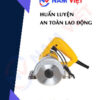





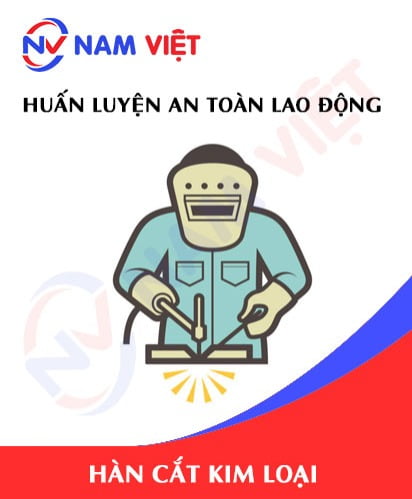

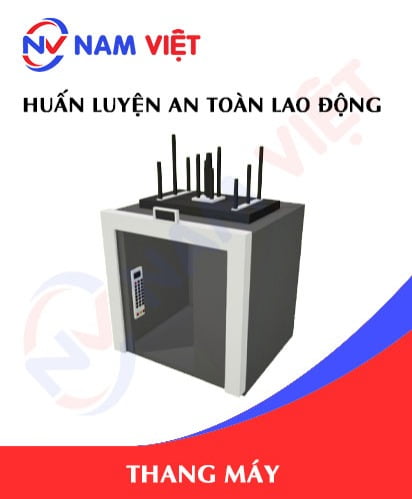
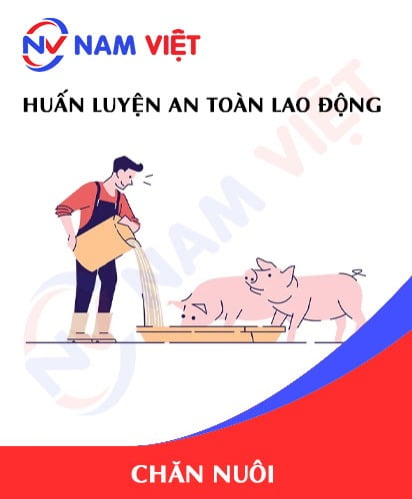

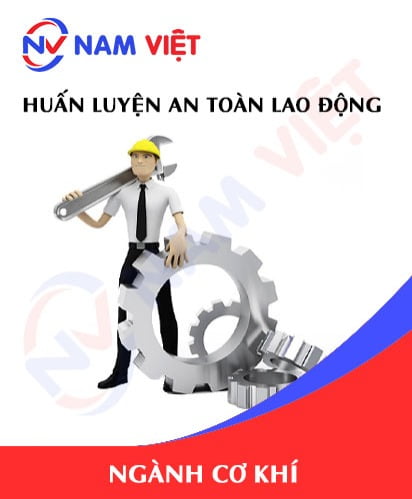
phanminhhang341
Giảng viên dạy rất sinh động dễ hiểu!